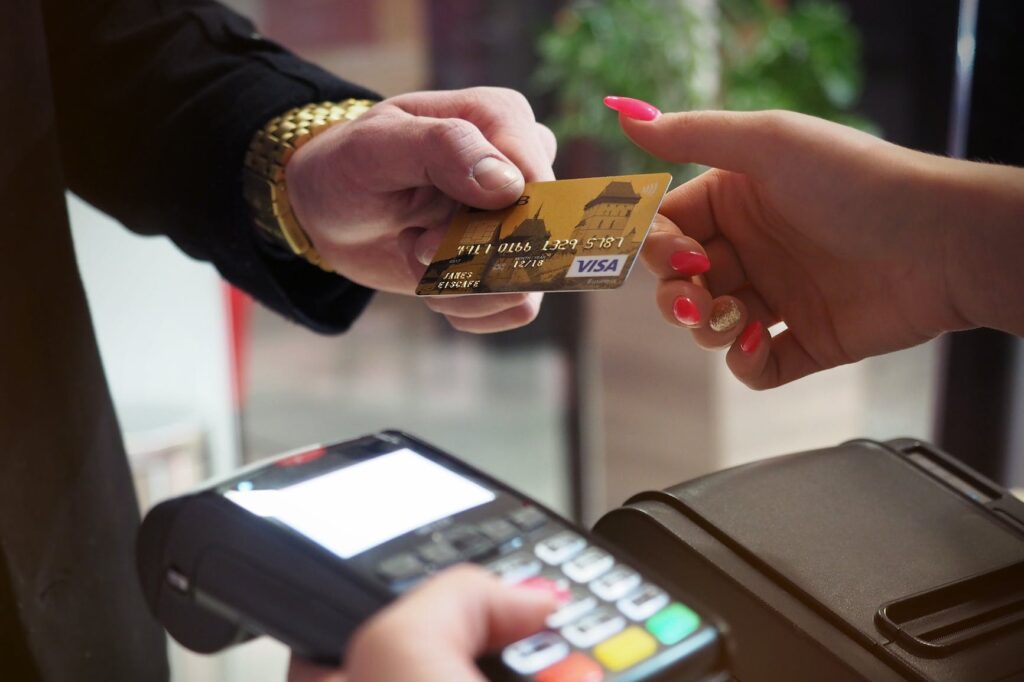Contents
Understanding OTP for Debit Card Transactions
To ensure secure and authenticated transactions, many debit card systems utilize OTP (One-Time Password) as an additional layer of security. Let’s explore what OTP is and why it is important for debit card transactions.
What is OTP?
OTP, or One-Time Password, is a security measure used to authenticate online debit card transactions. It involves the generation of a unique code that is sent to the customer’s registered mobile number. This code is valid for a short period, typically just a few minutes, and can only be used once. The OTP serves as a means to verify that the person initiating the transaction is the legitimate cardholder.
Importance of OTP for Debit Card Transactions
The use of OTP in debit card transactions is crucial for enhancing security and preventing unauthorized access. By requiring the cardholder to enter the OTP during a transaction, it adds an extra layer of protection. This ensures that even if someone gains access to the card details, they would still need the OTP to complete the transaction.
In regions like India, OTP is commonly used for online transactions using debit cards to prevent fraud and enhance security measures. The OTP is sent to the cardholder’s registered mobile number, and since it expires within a short period, it becomes a time-sensitive security feature (Forbes).
By implementing OTP, debit card providers can significantly reduce the risk of fraudulent transactions and protect their customers’ financial information. It ensures that only the authorized cardholder, who has possession of the registered mobile number, can complete the transaction.
While OTP is not strictly required for all debit card transactions, it is highly recommended as an additional security measure. The use of OTP provides peace of mind to both merchants and cardholders, knowing that their transactions are safeguarded against unauthorized access.
Now that we understand the concept and importance of OTP for debit card transactions, let’s delve into other security measures commonly used in conjunction with OTP, such as PIN authentication and two-factor authentication.
Security Measures for Debit Card Transactions
When it comes to ensuring the security of debit card transactions, several security measures are in place. These measures aim to protect cardholders from unauthorized use and fraudulent activities. Let’s explore three key security measures: PIN as an authentication method, Two-Factor Authentication (2FA), and Mobile OTP for user authentication.
PIN as an Authentication Method
Using a Personal Identification Number (PIN) is a crucial security measure for debit card transactions. It provides an additional layer of protection beyond the card’s chip technology. This extra security step helps prevent unauthorized use of the card in case it is lost or stolen (Investopedia).
Debit card users are often required to enter their PIN when conducting transactions at various terminals, such as ATMs and point-of-sale (POS) devices. This requirement ensures that only the authorized cardholder can access the funds associated with the card.
Two-factor Authentication (2FA)
Two-Factor Authentication (2FA) is an additional security measure used by many financial institutions to further verify the identity of the cardholder during sensitive transactions. This process typically involves the use of a second form of authentication, in addition to the debit card itself.
2FA processes may include methods such as mobile One-Time Passwords (OTPs), biometric information, or registered PIN codes. These methods help ensure that the person initiating the transaction is the authorized cardholder. By requiring a second factor of authentication, 2FA provides an extra layer of security against unauthorized access and fraud (Source).
Mobile OTP for User Authentication
Mobile OTP (One-Time Password) is another commonly used security measure for debit card transactions. OTP is a unique, time-sensitive code generated and sent to the cardholder’s registered mobile phone number. The cardholder must enter this OTP during the transaction to authenticate their identity and authorize the payment.
Mobile OTP adds an extra layer of security by ensuring that only the authorized cardholder, who has access to the registered mobile phone, can complete the transaction. This method helps protect against unauthorized use of the debit card for online or mobile app transactions. Financial institutions, like Toss Bank in Korea, have implemented card tapping mobile OTP, where users can authenticate by tapping their physical debit card to their mobile phone equipped with near field communication (NFC) technology (Source).
By combining these security measures – PIN as an authentication method, Two-Factor Authentication (2FA), and Mobile OTP – financial institutions aim to enhance the security of debit card transactions. These measures provide multiple layers of protection against unauthorized access and fraudulent activities, ensuring the safety and peace of mind of cardholders.
OTP Requirements for International Transactions
When it comes to international debit card transactions, the requirements for OTP (One Time Password) authentication may vary depending on the specific transaction and country. Let’s take a closer look at OTP requirements for online debit card transactions and the variations that exist across different countries.
OTP Requirements for Online Debit Card Transactions
For online debit card transactions, the use of OTP is a recommended security measure, although it is not strictly required in all cases. OTP verification adds an extra layer of protection by authenticating the cardholder’s identity and reducing the chances of fraudulent activities.
In countries like India, OTP is typically required for online debit card transactions to prevent fraud and enhance security measures. It ensures that the cardholder authorizes the payment and helps in reducing the risk of unauthorized transactions. However, it’s important to note that the specific requirements may vary between different banks and card issuers.
To determine whether OTP is required for a particular online debit card transaction, it is advisable to refer to the guidelines provided by the respective bank or financial institution. They will outline the necessary steps and security measures to be followed during the transaction process.
Variations in OTP Requirements by Country
OTP requirements for international debit card transactions can also vary from country to country. Different countries may have their own regulations and guidelines regarding the use of OTP for online transactions.
For example, in some countries, such as India, OTP is required for most online debit card transactions to enhance security and prevent unauthorized usage. On the other hand, in countries like the United States, the use of OTP for online debit card transactions may not be as widespread or mandatory.
It’s important to note that regulations and requirements regarding OTP usage are subject to change. Keeping up to date with the latest guidelines from your bank or financial institution is crucial to ensure a safe and secure online transaction experience.
To find specific information on OTP requirements for international debit card transactions in a particular country, it is recommended to refer to the guidelines provided by the respective country’s central bank or regulatory authority.
By staying informed about OTP requirements and adhering to the recommended security measures, individuals can enhance the safety of their international debit card transactions and protect themselves against potential fraud and unauthorized usage.
Exploring Alternatives to OTP for Debit Card Transactions
While OTP (One-Time Password) is a widely used method for securing debit card transactions, there are alternative approaches that offer convenience and enhanced security. In this section, we will explore three such alternatives: contactless card transactions, regulatory changes and OTP exemptions, and card tapping mobile OTP technology.
Contactless Card Transactions
Contactless card transactions have gained popularity due to their convenience and speed. With contactless technology, you can simply tap your debit card on a compatible payment terminal to make a transaction, eliminating the need to enter a PIN or provide an OTP for small purchases. However, it’s important to note that for higher-value contactless transactions, additional authentication, such as OTP, may still be required for security purposes.
The relaxation of the OTP requirement for small contactless transactions is part of the effort by regulatory authorities, such as the Reserve Bank of India (RBI), to promote digital payments and make them more user-friendly (Livemint). This allows for a seamless and quick payment experience, especially for low-value transactions.
Regulatory Changes and OTP Exemptions
Regulatory changes have been implemented to simplify and streamline the authentication process for debit card transactions. In some cases, these changes may result in exemptions from OTP requirements for certain transactions. These exemptions are aimed at providing customers with a convenient, safe, and secure way to conduct transactions using their debit cards (Livemint).
It’s important to note that exemptions from OTP requirements may vary depending on the country and the specific regulations in place. These exemptions often apply to low-risk transactions or transactions conducted through trusted platforms. However, for higher-risk or international transactions, OTP may still be required to ensure enhanced security.
Card Tapping Mobile OTP Technology
Card tapping mobile OTP technology offers an innovative solution for secure and convenient authentication in debit card transactions. This technology involves embedding an OTAC (One-Time Authentication Code) algorithm into the debit card itself. Users can authenticate their transactions by tapping their card to their mobile phone, which generates and verifies the OTP, providing both security and user convenience (Source).
The adoption of card tapping authentication has been increasing due to factors such as widespread NFC (Near Field Communication) support in smartphones, default NFC integration in newly issued payment cards, enhanced regulations for simple authentication, and increased consumer awareness of cybersecurity (Source). This technology offers a seamless and efficient way to authenticate transactions, reducing the reliance on traditional methods like SMS-based OTP.
While OTP remains a widely used method for securing debit card transactions, exploring alternatives like contactless card transactions, regulatory changes, and card tapping mobile OTP technology can provide users with additional options for secure and convenient authentication. It’s important to stay updated on the specific requirements and exemptions in your country or region to ensure a smooth and secure transaction experience.
Benefits and Limitations of OTP for Debit Card Transactions
When it comes to debit card transactions, the use of One-Time Passwords (OTPs) offers several benefits in terms of enhanced security and fraud prevention, while also considering the convenience and user experience. However, there are certain limitations and considerations to keep in mind. Let’s explore them further.
Enhanced Security and Fraud Prevention
The primary benefit of OTPs for debit card transactions is the enhanced security they provide. By requiring users to enter a unique code sent to their registered mobile number, OTPs help authenticate the transaction and ensure that the cardholder authorizes the payment. This additional layer of security reduces the risk of unauthorized transactions and provides protection against fraud.
OTP verification plays a crucial role in authenticating the cardholder’s identity during online transactions, reducing the chances of fraudulent activities and safeguarding the cardholder’s financial information. It adds an extra level of protection by ensuring that only the rightful cardholder can complete the transaction, mitigating the risk of unauthorized access to sensitive financial data.
Convenience and User Experience
While OTPs provide enhanced security, they also introduce an additional step in the payment process. This can sometimes be seen as an inconvenience, requiring users to retrieve and enter a unique code for each transaction. However, this inconvenience is outweighed by the added security it provides.
Moreover, the convenience of OTPs lies in the fact that they are sent to the user’s registered mobile number, eliminating the need for physical tokens or devices. This ensures that users can easily access and enter the OTP without any additional hardware. Additionally, advancements in technology have made the delivery of OTPs faster and more efficient, improving the overall user experience.
Considerations for Physical Cards vs. Mobile Apps
When it comes to using OTPs for debit card transactions, it’s important to consider the differences between physical cards and mobile apps. Physical debit cards often rely on the OTP delivery method via SMS, whereas mobile banking apps and payment apps may use in-app notifications to deliver OTPs.
Using mobile apps for OTP delivery can offer added convenience as users can access the OTPs directly within the app itself. This eliminates the need to switch between multiple devices or applications. However, it’s crucial to ensure the security of the mobile device, such as using strong passwords, enabling biometric authentication, and keeping the device’s software up to date.
On the other hand, physical debit cards rely on the delivery of OTPs via SMS. While this method is widely used and accessible, it’s important to ensure that the registered mobile number is up to date and that users have access to their mobile network for receiving the OTPs.
In summary, OTPs for debit card transactions provide enhanced security and fraud prevention, offering an additional layer of protection. They may introduce a minor inconvenience in the form of an extra step during the transaction process, but the benefits outweigh this inconvenience. Whether using physical cards or mobile apps, the convenience and user experience can be further optimized by ensuring the security of the device and keeping the necessary information up to date.




